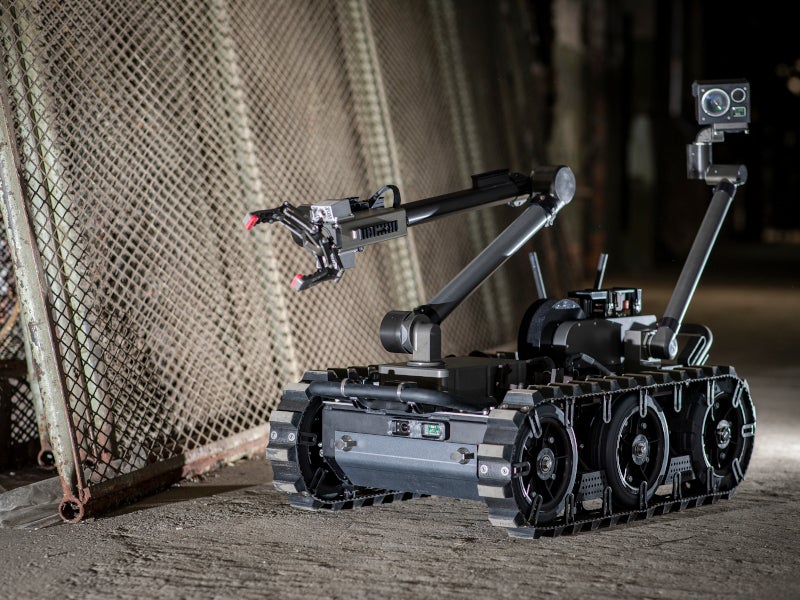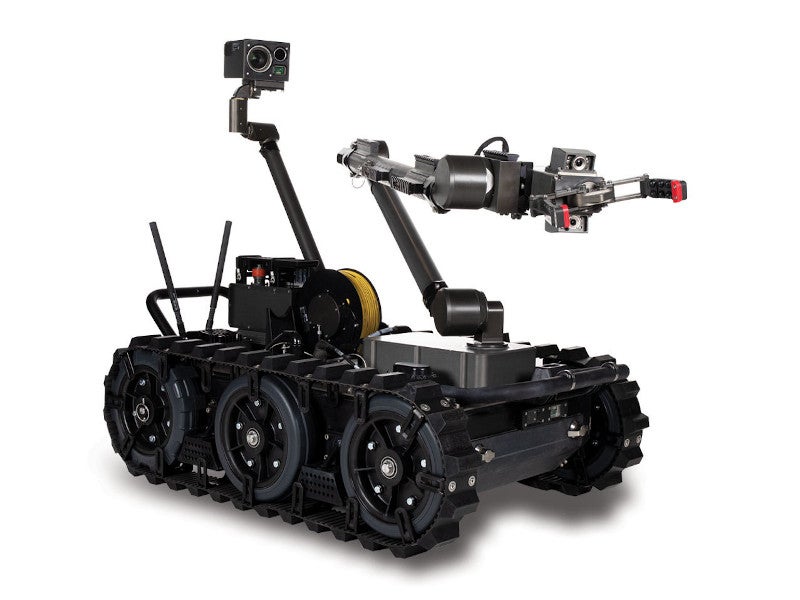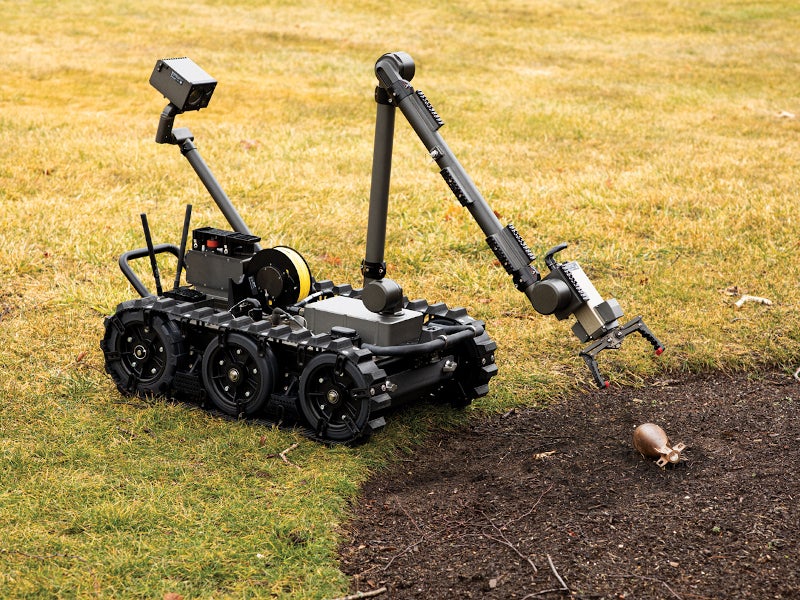Centaur is a medium-sized unmanned ground vehicle (UGV) developed by FLIR Systems, a US-based manufacturer of sensor systems. It is currently being offered for the US Department of Defense (US DoD).
Centaur UGV was initially developed by Endeavor Robotics which was acquired by FLIR Systems in February 2019.
The remotely operated UGV has the capability to detect, confirm, identify and dispose hazards including landmines, unexploded ordnance, and improvised explosive devices (IEDs) along the path of manoeuvring forces.
The fully-IOP compliant robot is a man transportable robotic system increment II (MTRS Inc II) solution. It can serve engineers, chemical, biological, radiological and nuclear (CBRN) and EOD soldiers.
Centaur UGV orders and deliveries
The US Army selected the company’s Endeavor Robotics business in 2017 as its medium-sized robot provider for Man Transportable Robotic System Increment II (MTRS Inc II). Endeavor Robotics unveiled the details of the UGV in March 2018.
FLIR Systems launched the Centaur UGV as its MTRS Inc II solution. The unit deliveries to the US Army commenced under a $158m multi-year programme.
The US Army and Navy awarded a $23.4m contract to FLIR Systems for 160 Centaur UGVs along with associated spares and accessories in June 2020. The contract was placed under the MTRS Inc II programme.
The US Marine Corps placed an $18.6m contract with FLIR Systems for more than 140 Centaur UGVs and spares in April 2020. The deliveries are expected to commence in the third quarter of 2020.
FLIR Systems secured a $23m contract from the US Air Force for more than 180 Centaur UGVs in March 2020.
Centaur UGV design and features
Centaur is a tracked UGV with three wheels on either side of the hull. The standard chassis of Centaur supports modular mission payloads to support current and future missions. The open-architecture robot features an advanced EO/IR camera suite which can identify objects during all weather conditions. It is equipped with a manipulator arm which can reach a distance of more than 6ft.
The vehicle’s robotic arm offers five different movements including shoulder pitch, shoulder yaw, elbow pitch, wrist pitch and wrist roll.
The 74kg UGV has lifting and carrying capacity of up to 14.5kg and can lift up to 6.8kg when its arm is fully extended. The modular payloads of the system can be used for CBRNE detection and other missions.
The unmanned ground vehicle can be added with a range of other sensors and payloads to support a range of missions. It is equipped with an interoperability profile.
The vehicle is controlled by MOCU3 with rugged laptop and hand controller. Communications up to 800m line of sight range and within 150m non-line-of-sight range are handled through radio, while fibre tether supports communications up to 200m distance.
Camera details
The UGV is installed with robust pan-tilt-zoom camera which has the capability of detecting objects using visible-near infrared (VIS), near infrared (NIR) and long-wave infrared (LWIR) spectrums.
The camera allows the UGV to detect persons located within 300m range in low light and night conditions as well as at 600m range in daylight.
Centaur UGV performance
The vehicle has high agility with zero radius turn, while its operating speed is more than 4km/h. The maximum endurance of the robot is up to eight hours.
The Centaur UGV can climb obstacles of up to 6in. It can climb stairs of up to 43° and traverse slopes of 30°.
The vertical reach of the vehicle is 75.5in above ground, while the camera can be remotely positioned 5in to 40in above ground.






